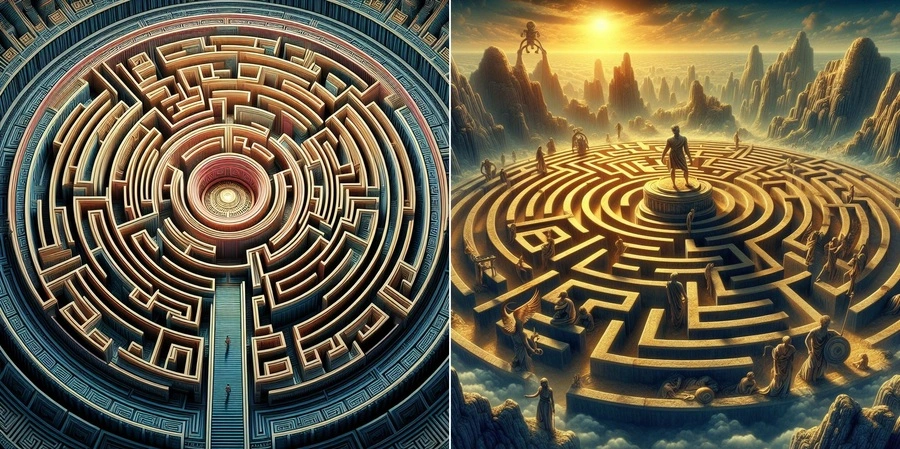
The Labyrinth of Crete is a fascinating subject, blending both mythology and history. According to Greek mythology, the Labyrinth was a massive maze built by the legendary craftsman Daedalus for King Minos of Crete. It was designed to imprison the Minotaur, a half-man, half-bull creature, born from the union of Minos’ wife, Pasiphae, and a bull. The Labyrinth itself was said to be so complex that once someone entered, they couldn’t find their way out unless guided by a thread, as the hero Theseus was aided by Ariadne’s ball of thread when he ventured in to defeat the Minotaur.
Myth vs. Reality:
- Mythical Context: The Labyrinth’s origins are deeply rooted in Greek mythology, serving as the backdrop for one of the most famous Greek myths. Its depiction as an elaborate maze where the Minotaur resides has made it one of the iconic elements in Western storytelling.
- Archaeological Evidence: Some scholars and archaeologists have linked the Labyrinth to the ancient Minoan palace at Knossos on the island of Crete. The palace’s complex structure, with multiple levels and numerous corridors, has led some to speculate that it might have inspired the legend of the Labyrinth. Knossos was a thriving Minoan city and features intricate architecture, but there is no direct evidence to suggest it was actually designed as a “maze” in the mythological sense.
- Theories about the Labyrinth: The term “labyrinth” itself has evolved over time. In ancient Greek, it referred to a complex structure, but not necessarily a maze as we understand it today. The Minoan palace at Knossos could have been what inspired the myth, with its complicated layout perhaps being interpreted as a “Labyrinth.”
- The Minotaur’s Mythical Role: The Minotaur’s story, with its themes of sacrifice and heroism, might also be symbolic rather than literal, representing a ritual or political conflict in the Minoan civilization. The labyrinthine structure could then be a metaphor for the inner workings of power and the human condition rather than an actual maze.
In conclusion, the Labyrinth of Crete is primarily a mythological construct, though it might be inspired by the real-life labyrinthine design of the Minoan palace at Knossos. While no physical evidence exists of a maze specifically designed to house a Minotaur, the blending of fact and myth has made the Labyrinth one of the most enduring stories of the ancient world.